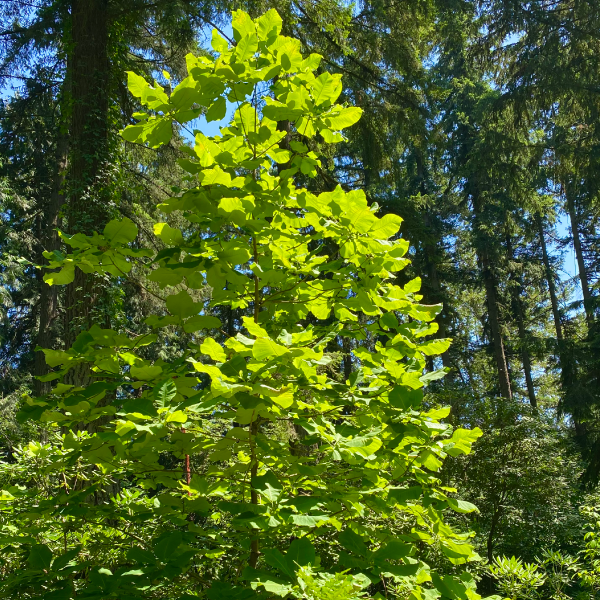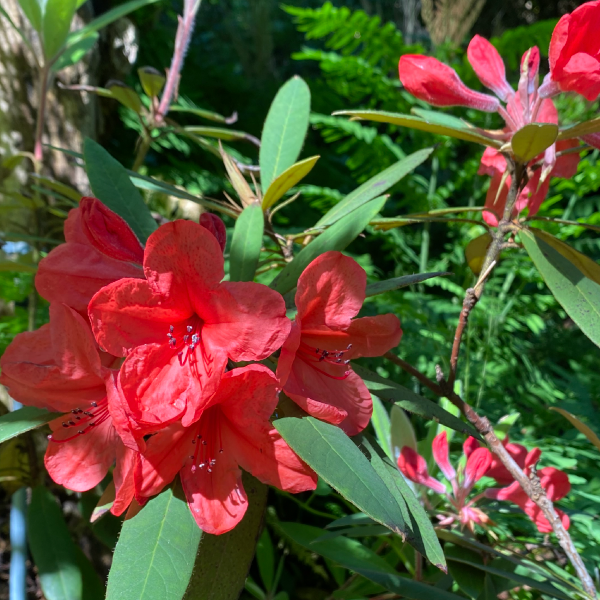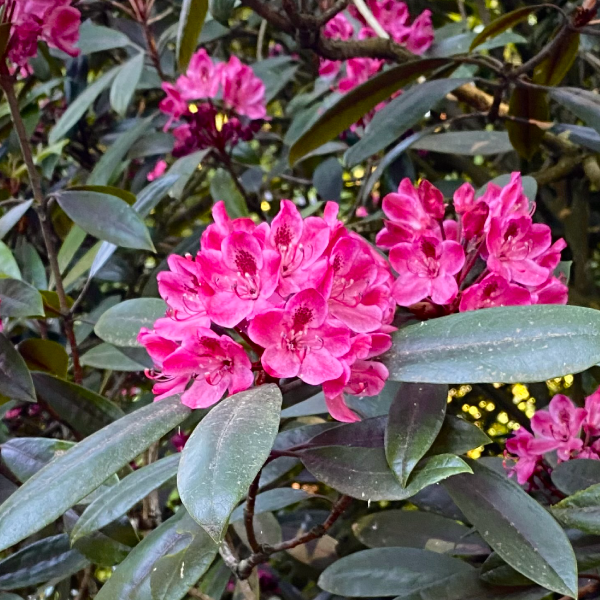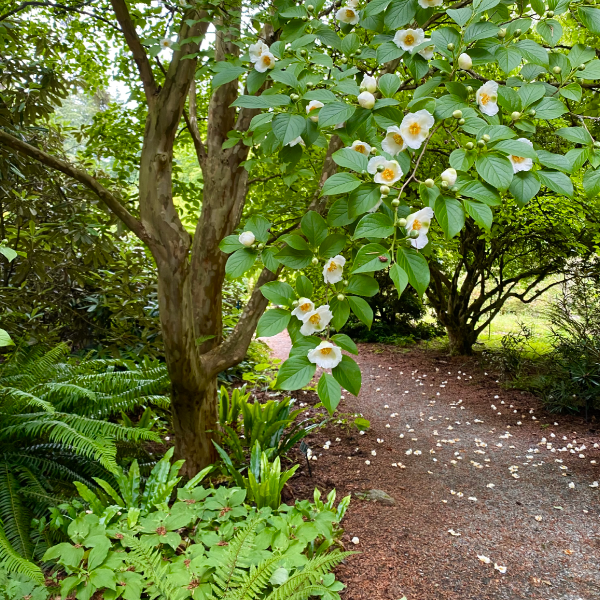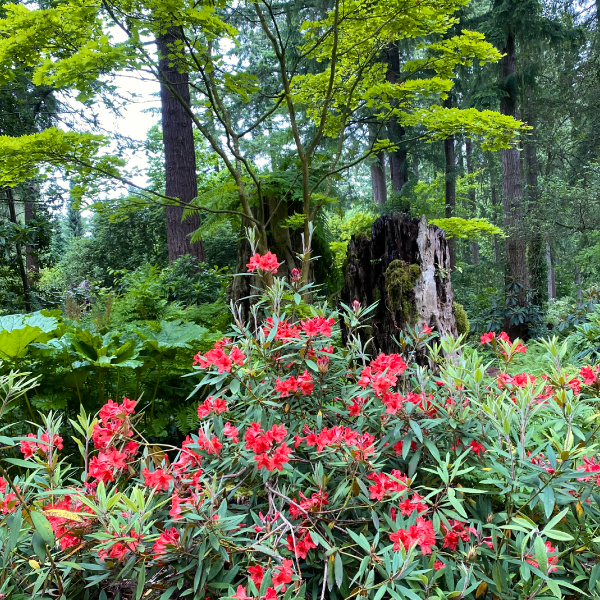July
Story and photos by RSBG Assistant Nursery Manager, Emily Joseph
Somehow, it always surprises me how much cooler it is beneath the shady canopy of the garden than just down the hill in the sun-soaked nursery. Yet it is a well-known fact that trees provide a cooling effect that reduces the buildup of heat from our urban infrastructure. In the heart of summer, a woodland garden is an exceptional place to get outside while avoiding the summer heat.
Majestic Trees Marvel at a collection of native and exotic trees from deciduous to evergreen, flowering to conifers. The upper canopy is comprised largely of our native douglas fir, Pseudotsuga menziesii, but is intermixed with Tsuga heterophylla (western hemlock), and Thuja plicata (western red cedar). Sit on a bench beneath the sprawling branches of the native big leaf maple (Acer macrophyllum) and gaze out at the upright pillar of giant redwood (Sequoiadendron giganteum). The collection of flowering trees beneath that upper canopy is comprised of a wide array of genera, but a few favorites include the rare and beloved Davidia involucrata (dove tree), the persistent fuzzy seed pods of the Pterostyrax psilophyllus, the multi-color trunks of Stewartia pseudocamellia (currently in full flowering glory), and Magnolia macrophylla showcasing the largest leaves of the genus. On your walk through each section of the garden, you will notice a vast collection of maples, with species and cultivars from across the globe exhibiting leaves in all shapes, sizes, and colors, from thin and thread-like to large palm-shaped foliage. Providing dappled shade at the lower end of the lawn, Metasequoia glyptostroboides (dawn redwood) makes a great spot to sit and relax below the branches of this prized deciduous conifer. In addition to the genera traditionally categorized as trees, stately old specimens of Rhododenron fortunei, R. auriculatum, and countless big-leaf species have gained enough size with age that you can now walk amidst their thick twisted trunks and look up into their overhead canopies. The layered levels of growth offer a sense of respite among this enchanting setting.
Hydrangea Collection If flowers are more your forte, a walk around the garden will showcase hydrangeas of all shapes and sizes. Down by the pond, the rich blue hues of ‘Blue Wave’ are often visitor favorites, but I am particularly partial to oversized yet delicate white bracts of ‘Lanarth’ in the back of the Big Leaf Garden. In the North American Garden, Hydrangea quercifolia is dazzling with a large conical floral display and leaves shaped like an oak that will turn eye-catching hues of red and orange in the fall. Yet, often one of the most surprising and delightful finds for visitors are the climbing hydrangeas woven around the trunks of fir trees, usually flowering for months on end. The collection includes but is not limited to Hydrangea anomala ssp. petiolaris, H. integrifolia, and the Japanese relative Schizophragma hydrangeoides ‘Moonlight.’
Summer Rhododendrons Though most consider blooming rhododendrons a sure-sign of spring, there are a number of summer blooming species that bring color when most other shrubs are finished flowering. Many of the eastern North American rhododendrons finally bloom as summer hits full swing, needing a true flush of heat to flower freely. Not far from the gazebo, Rhododendron maximum forms a wall of deep forest green, bejeweled with open-faced flowers of a rich plum-pink. On the edges of the Azalea Collection and over in the Upper Woodland, Rhododendron arborescens, the sweet azalea, perfumes the air elegantly. In the stumpery, Rhododendron griersonianum seems to shout summer through its coral-colored trumpets amidst a sea of ferny greenery. But it is yet another reminder that with late blooming species into September and a tropical conservatory, there are always rhododendrons somewhere in the garden putting on a floral display that extends well-beyond spring.
- Magnolia macrophylla
- Rhododendron griersonianum
- Rhododendron maximum
- Stewartia pseudocamellia
- Rhododendron griersonianum in the Stumpery

